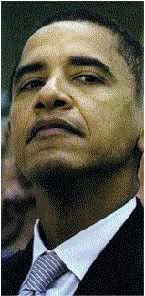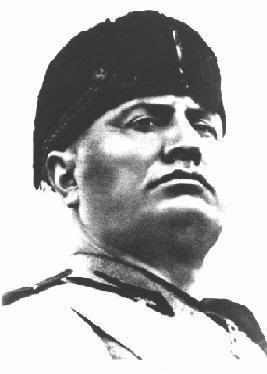Skip to comments.
Kenya and the myth of ‘African barbarism’
Spiked Online ^
| 10 January 2008
| Julie Hearn
Posted on 01/14/2008 6:04:55 PM PST by forkinsocket
‘Tribal violence’, ‘genocide’ and comparisons with Rwanda in 1994 characterised the early international media coverage of the post-election crisis in Kenya at the beginning of 2008. Such sensationalist reporting was not only analytically unhelpful - it was also irresponsibly dangerous. Kenya is not Rwanda, nor is it the metaphor for irrational, barbaric, ‘primordial’ African violence that the Western psyche seems to have an insatiable need for. Kenya must be understood on its own terms.
As the Kenya Human Rights Commission has bravely borne witness to in its work, elections in 1992, 1997, 2002 and the 2005 referendum vote have all been accompanied by political violence (1). For example, in the aftermath of the 1992 elections, Africa Watch’s report noted: ‘President Daniel arap Moi of Kenya confidently predicted that the return of his country to a multiparty system would result in an outbreak of tribal violence that would destroy the nation. His prediction has been alarmingly fulfilled. One of the most disturbing developments in Kenya over the last two years has been the eruption of violent clashes between different ethnic groups… So far, Africa Watch estimates that the clashes have left at least 1,500 people dead and 300,000 displaced.’ (2)
Political violence is not new to Kenya and those in power have always used ethnicity to maintain their position. The modern state of Kenya was built on colonial force and the political manipulation of ethnic identity. At the height of colonialism, ethnic organisations were actively encouraged to counter a national consciousness and all national organisations, except for religious institutions, were banned (3). Hence it was ‘natural’ to portray the country’s bloody independence struggle as atavistic. Kenya’s history is crammed full of examples of British colonialism’s tried and tested strategy of divide and rule. But it is important to remember that when the Kenyan electorate were finally free to vote at independence in 1963, they elected the Kenyan African National Union (KANU), with its nationalist vision, and not the ethnically-based federalism of the Kenya African Democratic Union (KADU), the departing colonial administration’s preference.
Post-independence politics in many African countries has been characterised by what Africa expert Morris Szeftel describes as ‘the dependence of the African petty bourgeoisie on access to the state and its resources. In the context of underdevelopment, local accumulation rests heavily on political power and the ability it provides to appropriate public resources.’ He continues: ‘The problem is how to find a niche somewhere between underdevelopment and the domination exercised over the local economy by foreign capital… Ruling elites learn that gate-keeping functions (trade licences, contracts, foreign exchange) bring huge rewards (far greater and with far fewer costs than legitimate business).’ (4)
It is not only accumulation that is dependent on access to the state but also political support. Via the mechanism of clientalism, those in public office can distribute development projects and more clandestine resources in return for loyalty and votes (5).
Both these processes have been ‘ethnicised’ (6). Kenya’s first president, Jomo Kenyatta, set the ball rolling from independence in 1963, and spent 15 years installing Kikuyu hegemony until Daniel arap Moi replaced him in 1978. For the next 24 years, Moi attempted to dismantle this hegemony and create networks of economic and political power based on ethnic Kalenjis, until Mwai Kibaki, a Kikuyu, became president in 2002. In the 45 years of Kenya’s independence, other large ethnic groupings have been economically and politically marginalised. This has been particularly true for the Luo, the ethnic group that Raila Odinga, Kibaki’s recent election opponent, comes from. It is important to note that although politics has been deliberately ethnicised, from above, many Kenyans have actively opposed this from below, right from the colonial era through to the present.
Such a political system, at key flashpoints such as elections, produces both cynically organised violence and the righteous indignation of an aggrieved citizenry. First, there is the immediate widespread fury of voters that the exercise of their democratic right was not taken seriously, but instead was merely a plaything in the hands of those in power. Why vote? Why believe in democracy? Second, there is anger at an even deeper level. For some, these elections represented a potential break with the corrupted political system, a rejection of ethnically entrenched politics and the possibility of a completely different way of doing politics. It is a slim hope, but a hope that many felt. Third, there is the despair that the same communities are losing out yet again: 50 years of independence, 50 years of exclusion. These are some of the motivations that lied behind the peaceful protests and the depth of anger and desolation is represented by those interviewed who said that they were willing to die.
The cynically organised violence comes in two forms, the formal and the informal. Police were firing live shots into the crowds of protesters, including those who were unarmed. The informal violence, including road blocks and their ethnically targeted intimidation, is carried out by vigilante groups, some with connections to local and national politicians, in government and in opposition. Observers have warned about the rise of vigilantism as a form of political violence, and now we see tragically why (7).
As the popular East African proverb notes, when two elephants fight it is the grass that suffers. Kibaki has used the full force of the state in the shape of live ammunition, water cannon and tear gas while Odinga has relied for his show of strength on supporters to come out on to the streets as cannon fodder. Both are seasoned politicians; indeed, Odinga was Kibaki’s kingmaker. Referring to the above proverb, Peter Kimani grimly notes: ‘But if all the grass is destroyed, the sage should have added, there will be no grass left for the elephants to feed on.’ (8)
It is the everyday heroic and pragmatic humanism of ordinary Kenyans, wananchi, which has acted as a countervailing force throughout Kenya’s history to the powder keg of politically manipulated ethnicity. As Ngugi wa Thiong’o reminds us, there are only two tribes in Kenya: the haves and the have-nots (9). Kenya and Kenyan lives are in a precarious position, balanced between the politics of what Colin Leys, drawing on Rosa Luxemburg, calls ‘capitalism-produced barbarism’ and the nation’s reservoir of humanity (10).
It is critical that we understand and accurately interpret the causes of Kenya’s political violence, provide comfort to its victims and support those inside and outside the country struggling to change the politics of underdevelopment. Challenging the racist discourse of ‘African violence’ behind the sensationalist international reporting is part of that process.
Julie Hearn is a lecturer in politics and development at the University of Lancaster.
(1) Kenya Human Rights Commission
(2) Human Rights Watch/Africa Watch (1993) Divide and Rule: State-Sponsored Ethnic Violence in Kenya, p1
(3) Furedi, F. (1994) Colonial Wars and the Politics of Third World Nationalism, I.B. Tauris
(4) Szeftel, M. (2000) ‘Between Governance & Underdevelopment: Accumulation & Africa’s “Catastrophic Corruption”, Review of African Political Economy 84, pp. 287 & 302
(5) Szeftel, M. (2000) ‘Clientalism, Corruption & Catastrophe’, Review of African Political Economy 85
(6) This map on the BBC website provides the following breakdown: Gikuyu (20 per cent), Luo (14 per cent), Luhya (13 per cent), Kalenjin (11 per cent), Kamba (11 per cent) with the remainder divided among Kenya’s smaller communities
(7) Warigi, G. (2007) ‘Kenya: Vigilantes on the Rise’, BBC World Service.com, 11 October 2007, Kenya: Vigilantes On The Rise; Kagwanja, P. (2003) ‘Facing Mount Kenya or Facing Mecca? the Mungiki, Ethnic Violence and the Politics of the Moi Succession in Kenya, 1987-2002’, African Affairs 102
(8) Kimani, P. (2008) A Past of Power More Than Tribe in Kenya’s Turmoil, Open Democracy, 2 January 2008
(9) Wa Thiong’o, N. (2007) The Choices Before Us: Reflections on Mwai Kibaki & the 2007 Kenya General Election, 17 December 2007
(10) Leys, C. (1994) ‘Confronting the African Tragedy’, New Left Review 204, p. 34.
TOPICS: Crime/Corruption; Culture/Society; Foreign Affairs; News/Current Events
KEYWORDS: africa; barbarism; kenya
Navigation: use the links below to view more comments.
first 1-20, 21-29 next last
.
To: forkinsocket
Africa is one giant blood bath at the moment...I don’t see how you can miss that.
2
posted on
01/14/2008 6:07:09 PM PST
by
bronxboy
To: forkinsocket
You really find interesting articles to post. It is appreciated.
3
posted on
01/14/2008 6:10:03 PM PST
by
Bahbah
To: forkinsocket
So it sounds as if diversity isn’t working so well in Kenya... Is the author of this article against diversity? Here in the US, we’re always told that diversity is good...
4
posted on
01/14/2008 6:12:42 PM PST
by
Koblenz
(The Dem Platform, condensed: 1. Tax and Spend. 2. Cut and Run. 3. Man on Man)
To: Bahbah
Thanks! I’ve been reading freerepublic for a couple of years & never posted anything or made a comment until recently, so I’m glad I added something good. :)
To: Koblenz
So it sounds as if diversity isn’t working so well in Kenya... Is the author of this article against diversity? Here in the US, we’re always told that diversity is good...No. She's opposed to Westerner's drawing non-favorable conclusions about non-western cultures, regardless of their truth.
To: forkinsocket
Most definitely good. I now watch for your choices.
7
posted on
01/14/2008 6:22:04 PM PST
by
Bahbah
To: ModelBreaker
Not only that — she blames capitalism!
There must be something wrong in the brain wiring of people who are that steadfastly determined to ignore the truth in front of their eyes and substitute a Marxist revision instead.
8
posted on
01/14/2008 6:27:35 PM PST
by
BenLurkin
To: forkinsocket; Fred Nerks; Beckwith; george76
This is a very interesting article. No mention of the Luo initiative under Odinga to bring Kenya under Sharia law by written memorandum agreement with the Muslim Council? ( you can see the actual document duly signed, at the link below).
That Sharia move is the motivation for the violence in Kenya.
Genocidal violence between Muslim Luo ( perpetrators) and Kikuyu is not genocide because its in Kenya? The news reports by European news agencies are not accurate? A church full of Kenyan Christians were burned alive by the Luo, thats NOT genocide?
It all depends on what the definition of "IS" is?
The real dose on Kenya, Obama and Odinga is here:
How Obama and his 1st paternal cousin, Odinga Tried to Bring Kenya Under Sharia Law and Failed, The Dose
This thread's article is damage control for the soon to be made revelation of Obamas campaigning for Odinga in August of 2006, just before Obama filed for his candidacy with the US Federal Election Commission.
Obama is a black nationalist and is associated closely with Islamofascism in Kenya. The Kenyan Islamofascists, led by Odinga mean to annex Kenya to Somalia and Sudan, in an axis of Islamofascism. Dear knows what that means for America should Obama become president.


9
posted on
01/14/2008 6:30:20 PM PST
by
Candor7
(Fascism? All it takes is for good men to say nothing.)
To: forkinsocket

africawinsagain...
10
posted on
01/14/2008 6:31:48 PM PST
by
Chode
(American Hedonist ©®)
To: ModelBreaker
"She's opposed to Westerner's drawing non-favorable conclusions about non-western cultures, regardless of their truth." That's exactly how I read it.
We ignorant Westerners should realize that it's just normal for different tribes to go on murderous raping rampages after an election. Mass murder and arson are a normal part of the election process.
11
posted on
01/14/2008 6:32:04 PM PST
by
2111USMC
(www.Fred08.com)
To: 2111USMC
Mass murder and arson are a normal part of the election process.In some parts of the world, it is normal.
To: forkinsocket
13
posted on
01/14/2008 6:41:43 PM PST
by
Fred Nerks
(FAIR DINKUM!)
To: Fred Nerks; Candor7
Islaam is really spreading rapidly in Africa. African Christians & animists are on their way to becoming an endangered species.
To: forkinsocket
Ethnic groups:
Kikuyu 22%, Luhya 14%, Luo 13%, Kalenjin 12%, Kamba 11%, Kisii 6%, Meru 6%, other African 15%, non-African (Asian, European, and Arab) 1%
Religions:
Protestant 45%, Roman Catholic 33%, Muslim 10%, indigenous beliefs 10%, other 2%
note: a large majority of Kenyans are Christian, but estimates for the percentage of the population that adheres to Islam or indigenous beliefs vary widely
15
posted on
01/14/2008 6:49:29 PM PST
by
Fred Nerks
(FAIR DINKUM!)
To: forkinsocket
16
posted on
01/14/2008 6:51:14 PM PST
by
spanalot
(*)
To: forkinsocket
speak your mind - and post it too.
17
posted on
01/14/2008 6:53:39 PM PST
by
spanalot
(*)
To: forkinsocket
we have many african american leaders in the US - where are they on this issue?
18
posted on
01/14/2008 6:56:18 PM PST
by
spanalot
(*)
To: forkinsocket
Add me to the list of long-time Freepers who enjoy the articles you post.
19
posted on
01/14/2008 6:57:34 PM PST
by
puroresu
(Enjoy ASIAN CINEMA? See my Freeper page for recommendations (updated!).)
To: puroresu
Navigation: use the links below to view more comments.
first 1-20, 21-29 next last
Disclaimer:
Opinions posted on Free Republic are those of the individual
posters and do not necessarily represent the opinion of Free Republic or its
management. All materials posted herein are protected by copyright law and the
exemption for fair use of copyrighted works.
FreeRepublic.com is powered by software copyright 2000-2008 John Robinson


 africawinsagain...
africawinsagain...

